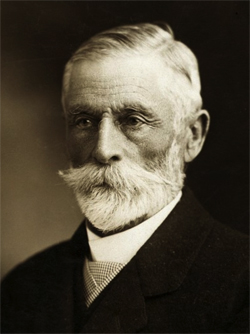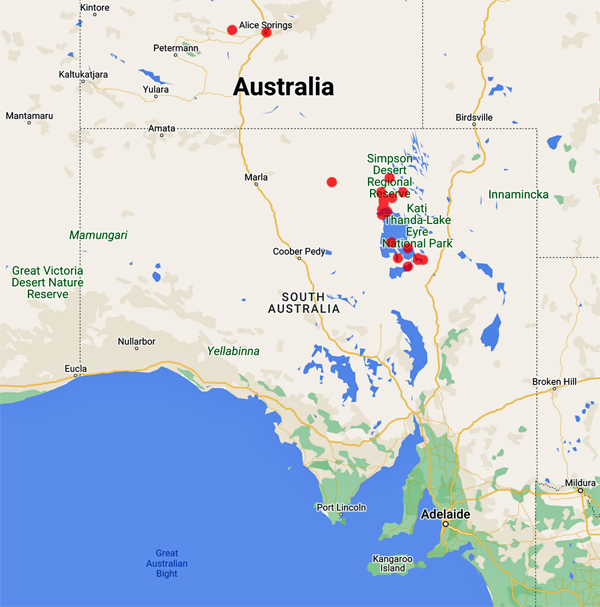
Council of Heads of Australasian Herbaria
Australian National Herbarium
Biographical Notes
 |
Council of Heads of Australasian Herbaria |
 Newland, Simpson (1835 - 1925)
Newland, Simpson (1835 - 1925)Born on 2 November 1835 at Hanley, Staffordshire, England; died on 27 June 1925, at North Adelaide, SA.
His family, part of a group of over thirty Congregationalists led by Ridgway Newland, migrated in 1839 to Encounter Bay, South Australia, where the Aborigines, whalers, and the country itself influenced Simpson deeply. His mother taught him and his seven siblings, and Simpson grew up with all the hallmarks of an educated man. Although he was frail and delicate, his upbringing encouraged resilience and endurance, and he became a competent stockrider and bushman.
He joined his brother-in-law Henry Field in a partnership which acquired 'Marra' and 'Warlo' stations on the upper Darling River, New South Wales, and, later, 'Talyealye' on the Paroo River, near the Queensland border. Newland was overseer, then manager, for about fifteen years and used 'Marra' as his headquarters. On 12 September 1872 at Buckanbee, New South Wales, he married Jane Isabella Layton. In 1876, with three sons, they moved to Adelaide and bought a mansion at Burnside which they called 'Undelcarra'; Newland managed the stations from Adelaide.
In 1881-87 he sat in the House of Assembly as a member for Encounter Bay. From the start he battled for two traditional South Australian objectives and continued to do so for nearly forty years: settlement of the Northern Territory, especially by means of a transcontinental railway, and control of the commerce of the Murray River. Newland visited the Territory, recommended building the railway on the land-grant system, and interested British capitalists in the project. Newland also worked tirelessly for the cause of building a ship canal linking the Murray at Goolwa with the sea at Victor Harbor; he wrote articles and letters and lectured, claiming that the waterway was being wasted because of interstate rivalries. He was a foundation member and, from 1904, president of the River Murray League. A River Murray port was never achieved but Newland helped to formulate and implement the system of locks and barrages regulating the Murray's flow.
In 1895-1900 and again in 1920-22 he was president of the South Australian branch of the Royal Geographical Society of Australasia, and in 1906-23 president of the South Australian Zoological and Acclimatization Society. He was chairman of the Wyatt Benevolent Fund for twenty-three years and was prominent in the Northern Territory League.
Newland remains best known as an author. He published a novel, Paving the Way (London, 1893), which is a major document of colonial history; it was republished seven times by 1962. Newland's second novel, Blood Tracks of the Bush (1900), was less successful, partly because inferior, but also because he courageously and accurately portrayed horrific mass-murders of Aborigines by police and pastoralists. The public was not ready for such honesty.
Newland valued the education he had acquired as a child from the Ramindjeri people of Encounter Bay and he dealt with the River Darling Aborigines, the Parkingees, whose vocabulary he collected, kindly and sensitively. He was also what today would be called a conservationist. He deplored the European destruction of the environment and proposed that the Coorong area should be reserved for Aborigines and the land reafforested. In 1922 he was appointed C.M.G.
Newland was both highly cultivated and a tough bushman, able to fend for himself anywhere — swimming cattle across flooded rivers, or handling armed maniacs. His Memoirs (1926) were published posthumously. He signed the manuscript on 6 June 1925 and on 27 June died, at North Adelaide, survived by his wife and three of their five sons. His ashes were taken to his spiritual home, Victor Harbor, for burial.
Source: Extracted from: https://adb.anu.edu.au/biography/newland-simpson-sim-7828
Portrait Photo: Extracted from: https://en.wikipedia.org/wiki/Simpson_Newland#.
Data from 161 specimens
